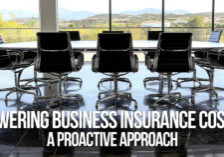Seven Factors that Affect Your Homeowner’s Insurance Rates
Seven Factors that Affect Your Homeowner’s Insurance Rates

Seven Factors that Affect Your Homeowner’s Insurance Rates
Those unfamiliar with how insurance rates are set may feel as if there are a few guys in a smoke-filled room rolling dice to determine premiums. Actually, it is quite the opposite. Insurance rates are based on complex formulas using a variety of factors. When it comes to homeowner’s insurance, here are seven factors that can affect your rates.
- Size of the home. Generally speaking, the larger a home, the more expensive it would be to replace it. It would make sense then, that a home with 3,600 square feet of living space would have a higher homeowner’s insurance premium than one with 1,600 square feet.
- Construction materials. How your home was constructed will have a significant impact on your rates. Some materials are more resistant to fire and wind, for example. Therefore homes constructed using concrete blocks or brick may be less expensive to insure than a pre-fabricated or stick-built home.
- The deductible. The deductible is the amount of money that you would pay out-of-pocket before policy proceeds begin to pay. The higher your deductible, the lower your homeowner’s insurance premium is likely to be.
- High-risk features. If your home has what are considered high-risk features, premiums will be more expensive. These higher-risk features would include items like a fireplace, wood-burning stove or pool. Rates may even be higher if you have a dog, especially one that may be classified as aggressive.
- Location. The location of a house can impact insurance costs. Homes near water, for example, can be more expensive to insure. If a house is located far from a fire station, it too may have higher premiums.
- If you have a home-based business.If you are operating a home-based business from your home and have not notified your insurance agent, you may be placing that business, your home and your financial future at risk. Your homeowner’s insurance premiums may rise slightly, but at least you’ll have needed coverage.
- Roof condition. Roofing is one of the single most expensive parts of a home to replace. It is also vulnerable to fire and the elements. This is why a roof in poor condition may cause homeowner’s insurance rates to soar.
We may not give much thought to our homeowner’s insurance policies, including how much they are costing us. If you haven’t looked at your policy in years, now may be the time for a no-obligation homeowner’s insurance policy review. Contact one of our independent agents for a review and price quote today.









